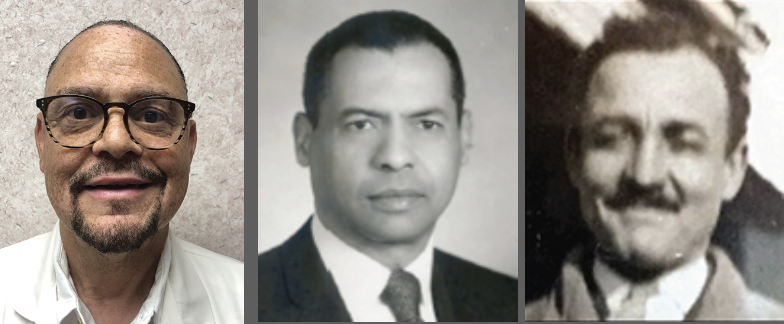Dr. G.G. Brown moved his medical practice to Wichita in 1908 to serve the city’s black community. Although the days of segregated medicine are long gone, the need for black physicians such as Dr. Brown has never been more acute than it is now.
“We really need to figure out how to get more minority doctors to train and stay here,” said Dr. Val Brown, Jr., the grandson of G.G. Brown and third generation of his family to practice medicine here. “The numbers are just awful. They haven’t improved at all in decades. It’s kind of deplorable.”
The Sedgwick County Medical Society has launched a black physician recruitment effort to recruit and retain more black medical students and residents in Wichita, with the hope that many will remain here to practice. In June, the medical society announced that the recruitment effort would be named the Brown Family Fund for Black Physician Recruitment. That move came shortly after the death of Dr. Val Brown, Sr., the son of G.G. Brown.
“We’re excited about that,” Val Brown, Jr. said. “It wasn’t anything we pursued. Of course, we were truly honored.”
Dr G.G. Brown graduated from the medical school at Howard University in Washington, D.C. in 1901 and headed to Atchison, Kan. “What influenced him to become a physician, I’m not sure,” Val Brown, Jr. said. “But there weren’t enough minorities there (in Atchison) to support a practice, so he came to Wichita.”
“He was a general practitioner,” Brown said of his grandfather. “He did some surgeries, he delivered babies. I have seen pictures of the babies he delivered. There were just dozens, you know.”
Val Brown, Sr., was born at the family home on Cleveland Street, across 13th Street from the current site of McAdams Park, and was just a year old when his father died during a volleyball game, probably of heart attack. He was called “little Dr. Brown” growing up and also earned his medical degree from Howard University before returning to Wichita to practice in 1948.
“It was indelibly pressed on my mind that this — studying to become a doctor — was what I was going to do,” he told the Wichita Eagle in a 1994 article about his retirement.
Wichita hospitals — along with restaurants and other facilities — were segregated when Val Brown, Sr. began his practice. But Brown eventually became one of the first black physicians to have privileges at Wesley Medical Center. His wife, Jo, became the first woman of color elected to the Wichita School Board.
“Dad was such a patient, persistent, thoughtful physician,” Val Brown, Jr. said. “He was the complete physician. He saw his hospital patients every day — Monday through Friday, Saturday and Sunday. There were only about two other physicians in the whole city who did that.”
Val Brown, Jr. graduated from the University of Kansas School of Medicine–Wichita in 1979, one of the first two black physicians to do so. He served primarily African-American patients and earned a reputation as both an old-fashioned physician who took time to get to know his patients and one who could be stern when those patients didn’t follow doctor’s orders, according to an article in The Community Voice. He retired from his private internal medicine practice in 2016, although he continued to work in emergency rooms for a time and more recently has worked as an independent contractor for ProMed, an occupational medicine practice. “When I retired, it took me about eight months to realize that I’d still like to be involved doing something,” he said.
Nationally, about 2 percent of physicians are black. Some research shows that black patients, particularly black men, tend to have better health outcomes when they are seen by black physicians. In Sedgwick County, 33 of the medical society’s total membership of about 1,000 physicians are black.
“One problem that we definitely have is that we have too few minority teachers,” said Val Brown, Jr., whose wife, LaTricia, has taught school in Wichita USD 259. “Minority teachers and counselors should be in a position to identify talented minority youth, to kind of gear them toward STEM (Science, Technology, Engineering and Mathematics) education, and in particular towards medicine.”
In addition to recruiting black medical students and residents, the medical society is trying to encourage students to consider a career in medicine. This year, for example, it sent physicians to 17 different USD 259 classrooms to talk about their profession. The society also helped sponsor local showings of “Black Men in White Coats,” a documentary about the shortage of black male physicians. The society is donating $10,000 to the Brown Family Fund effort.









